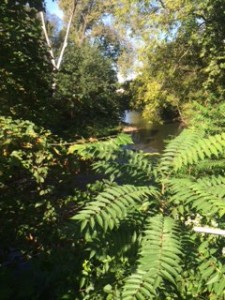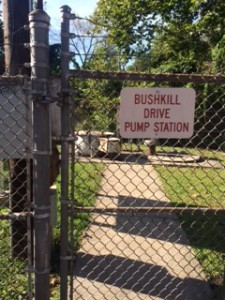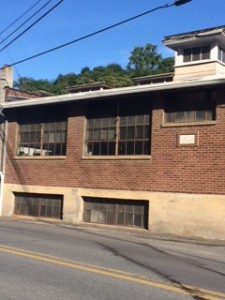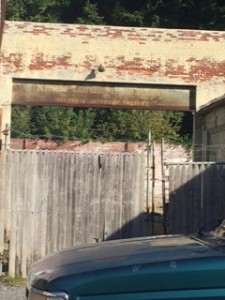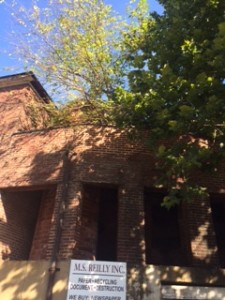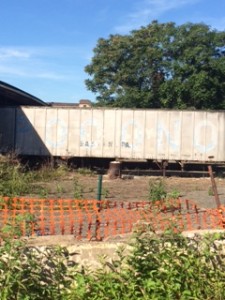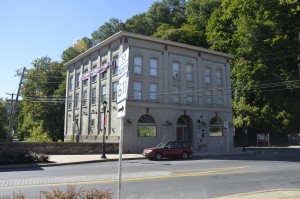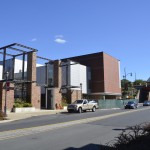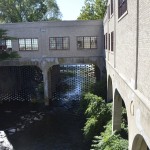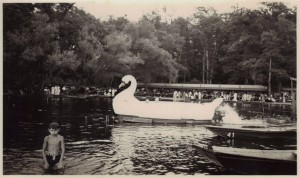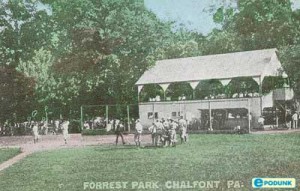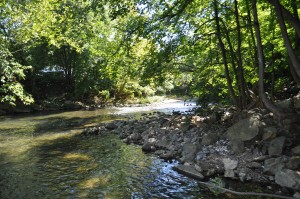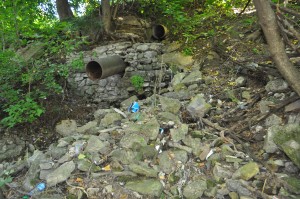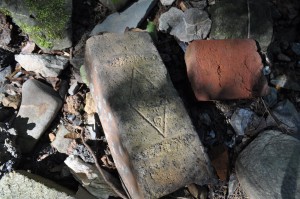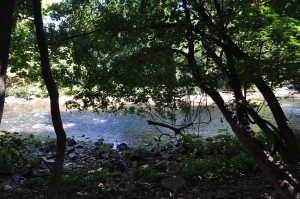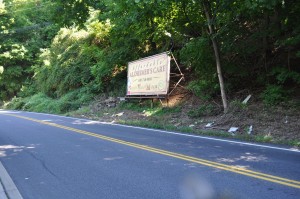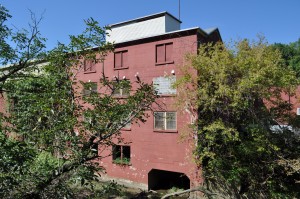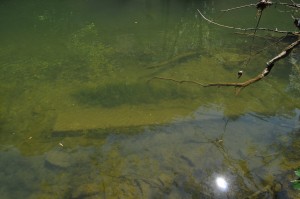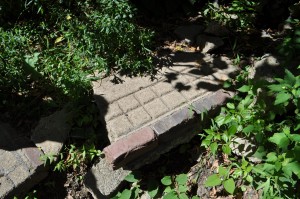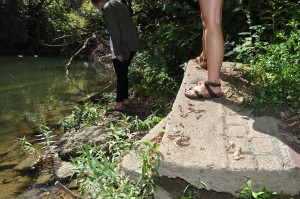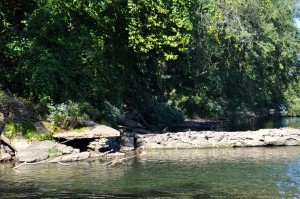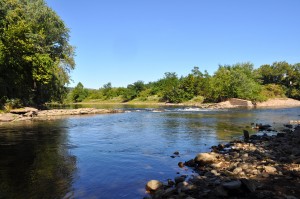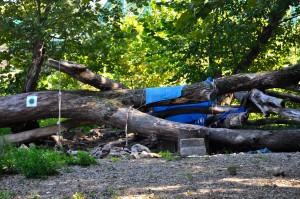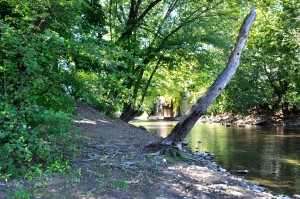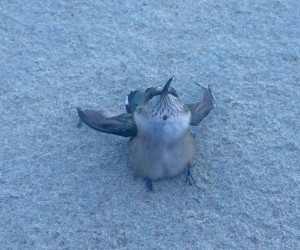Today, Julie, Joe, and myself went out to our site near a bend in Bushkill Creek to spend some time learning about its past, the current state of nature, and man’s interaction with the site. Nestled just underneath the football stadium, the Bushkill lazily meanders around bends that border roads, paths, and lush vegetation. Thousands of flies hovered around slack pools in the Creek, as they also heard the few splashes that we did, indicating that fish were feeding in our vicinity. While the immediate border of the Creek was dense with trees, vines, roots, and other plants, not much else was still left unmolested by man. Standing on the elevated bank of the river, it was hard to communicate with one another; not because of the water’s force, but rather, because of the sound of the road very close behind us. A pump station had a release pipe entering into the Creek, shooting water in a new direction, combating the natural flow of the river.
Beyond the banks, we are sure that an interesting story is to be told from the ruins of old buildings dating back to the 19th century in some instances. Walking around in the shadows of failing brick works, weathered exteriors and windows, we saw numerous signs for different enterprises: paper mills, Cordage companies, and other signs which we will be sure to discover more about. Trees battled foundations, as buildings and nature interacted with one another for space in the compacted area. Auto body garages now take up the space that these former businesses occupied, but they too are also part of the story of our location. It is a unique place because when driving on the road next to our location, it is nearly impossible to know you are next to the Creek; the vegetation is so dense, the flow of the water so removed from the bustle of humankind, it requires getting out and walking practically into the water to discover your natural neighbor.
We look forward to learning more about the aging buildings in our zone, and crafting a story regarding their interaction with the Creek, the College’s interaction with the Creek and buildings (the College owns some land in our site), and understanding why things are in Site 4 the way they are currently. 